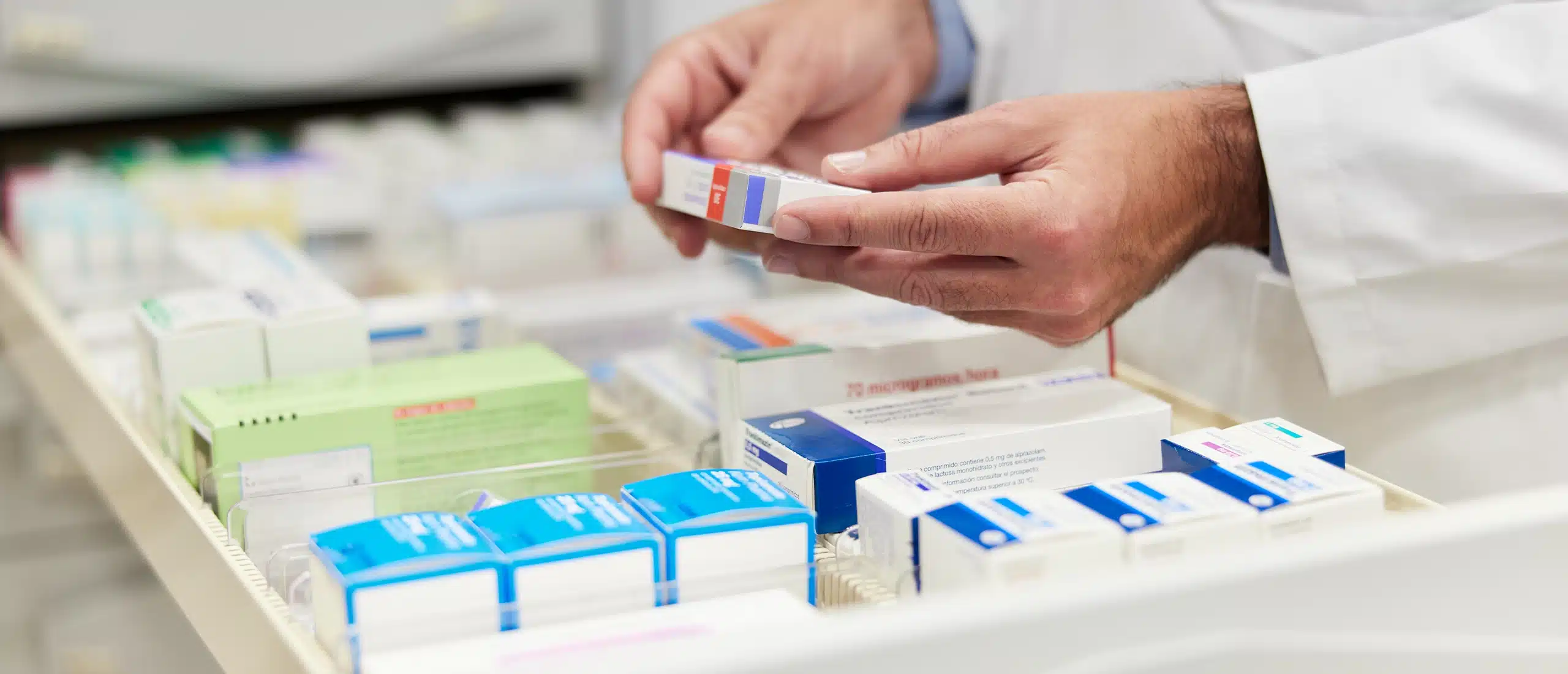“Miracle” Diabetes Weight Loss Drugs Are Back In Stock. Should You Try To Get Them?
It’s not surprising diabetes weight loss drugs Ozempic and Wegovy—aka semaglutide—have washed over social media platforms, such as TikTok, like a tsunami.
With the likes of Elon Musk attributing his recent weight loss to fasting…and Wegovy, and a slew of Hollywood celebrities on the injection party bandwagon, coupled with the recent Food and Drug Administration approval (in 2021), you’ve got a recipe for rabid demand.
Following a months-long shortage of the anti-obesity drugs, manufacturer Novo Nordisk released a statement in late December that “all dose strengths of Wegovy are now available to retail pharmacies nationwide,” in a statement on its website.
The drug maker adds, “however, pharmacies may experience normal delays given the time required to order the product from their local distribution center, and geographical variables.”
So, it’s now more readily available, but it could still take a little longer than normal to fill a script.
Ozempic, the sister pharmaceutical to Wegovy, is also coming out of a supply shortage, per Novo Nordisk, who pledges to resolve issues by early 2023. (Both drugs contain semaglutide, though the formulations are different and the two drugs are not interchangeable.)
This overwhelming clamoring, spurred by social media, made it incredibly difficult for patients with diabetes to access it, so as the kink in the supply hose loosens, it raises questions about the efficacy of semaglutide drugs, what the side effects are, and who is eligible for them.
And, the biggest unanswered question: who should get first crack at the weight loss injectables?
Let’s break each of those down.
What is Semaglutide?
Semaglutide is a family of medications, including Ozempic and Wegovy, originally used to treat people with type 2 diabetes. The compound in these medications is glucagon-like peptide-1 (GLP-1) which activates GLP-1 receptors in your body to control your blood sugar levels.
Over time, researchers found these under-the-skin injectable treatments are also effective for treating chronic weight issues, including overweight and obesity.
One 2021 study found 2.4 mg of semaglutide—in tandem with healthy lifestyle changes—reduced bodyweight in people with overweight or obesity (1).
As Matthew Cowling, D.O., previously told The Edge, over 30 percent of Americans are overweight and over one-third are obese, so semaglutide could be an effective treatment to help over 70 million people.
How Do Wegovy and Ozempic Work?
When treating diabetes, semaglutide acts as a GLP-1 agonist, meaning it binds to receptors that normally your naturally occurring GLP-1 would. It not only controls your blood sugar levels, but also lowers the risk of heart attack and stroke in people with type 2 diabetes, or heart and blood vessel disease.
For weight loss, semaglutide targets areas of your brain that regulate your food intake. Semaglutide, “makes [GLP-1] work better to enhance communication between the gut and the brain and makes us feel fuller and also help with reducing appetite,” Amanda Velazquez, M.D., told CBS News.
What’s the Difference Between Ozempic and Wegovy?
The main difference is that Wegovy is FDA-approved for weight loss, while Ozempic is FDA-approved to only treat diabetes, according to Forbes.
While doses differ, the two medications are designed and act the same way. You’ll find Wegovy is largely out of pocket, whereas most insurance plans will take Ozempic.
As gastroenterologist Christopher McGowan, M.D., told Forbes, the demand for Wegovy and subsequent shortages left people snatching up Ozempic for weight loss.

How Effective is Wegovy for Weight Loss?
Wegovy underwent four 68-week trials, per the FDA. The largest study in people without diabetes found a 12.4 percent decrease in bodyweight in the Wegovy group compared to the placebo. In one trial for adults with type 2 diabetes, people who took Wegovy lost 6.2 percent of their starting weight compared to the placebo.
What Are Ozempic and Wegovy’s Side Effects?
Novo Nordisk reported that almost seven percent of people treated with Wegovy in clinical trials had adverse reactions to the drug and just over four percent of people had gastrointestinal reactions.
They note more common reactions that led to people ceasing Wegovy treatment included 1.8 percent for nausea, 1.2 percent for vomiting, and 0.7 percent for diarrhea.
Let’s look at what side effects you may face with Wegovy and Ozempic.
Wegovy
Common side effects of Wegovy include:
- Nausea
- Diarrhea
- Vomiting
- Constipation
- Stomach pain
- Headache
- Tiredness and fatigue
- Upset stomach
- Dizziness
- Feeling bloated
- Belching
- Gas
- Stomach flu
- Heartburn
Ozempic
Common side effects of Ozempic include:
- Nausea
- Diarrhea
- Stomach pain
- Vomiting
- Constipation
More serious side effects for both include:
- Inflammation of your pancreas
- Changes in vision
- Low blood sugar
- Kidney problems
- Serious allergic reaction
- Gallbladder problems
- Increased heart rate (Wegovy)
- Depression or thoughts of suicide (Wegovy)
What Does Ozempic and Wegovy Cost for a Month?
Cost varies greatly depending on whether or not you use insurance. Out of pocket, semaglutide will cost around $893 to $933 for Ozempic. Wegovy is more steep at $1,346 to $1,427.
Insurance costs will vary depending on your provider.
LOW T AND WEIGHT GAIN
Who is Eligible for Ozempic and Wegovy?
The FDA approved Wegovy for adults with overweight or obesity with at least one weight-related condition, including high blood pressure, type 2 diabetes, or high cholesterol. The kicker: it’s to be used in tandem with less calories in your diet and more physical activity.
In December of 2022, the FDA also approved Wegovy for teens 12-years and older with obesity, per a Novo Nordisk press release.
Because Ozempic is only FDA approved for type 2 diabetes, only people with the disease are eligible for treatment via their doctor.
“Approximately 80% of patients with type 2 diabetes also have concurrent obesity,” Fatima Cody Stanford, M.D., told Forbes. “These patients garner dual benefit for the treatment of their diabetes and obesity.”
Who Should Get Priority For Ozempic and Wegovy?
Now that drug manufacturers are back to producing enough medication, the TikTok shortage has ceased to empty shelves.
Dr. Cowling previously told The Edge that, “Those with a medical condition need to be triaged to receive the drug first. Patients who are at risk of dangerous blood sugar increases in the setting of type 2 diabetes should be first to receive the drug, then those suffering with morbid obesity [a BMI over 40] are advised to next receive it.”
But Dr. Velazques told CBS News that, “Obesity is a real disease too, it leads to social issues, medical issues, psychological issues. These should be prescribed by a physician who decided, one, you’re a candidate and that two, if you have a side effect, you could be treated.”
Perhaps restrictions will tighten to avoid another semaglutide shortage.
References
1. Wilding, J.; et al. (2021). Once-Weekly Semaglutide in Adults with Overweight or Obesity.

Want exclusive content? Our digests do that.
The best science-backed, expert-driven health and lifestyle content delivered to your inbox, weekly.














